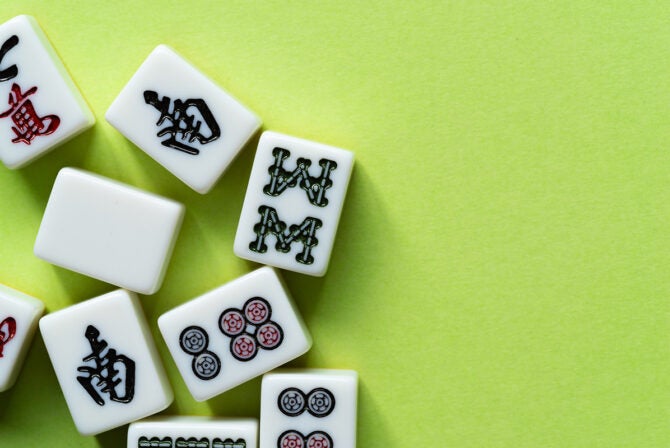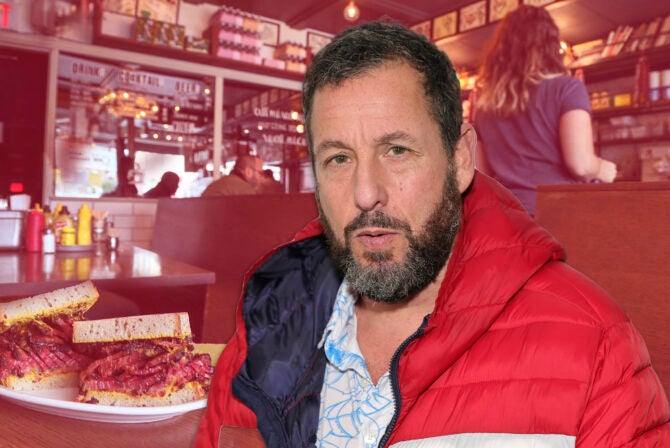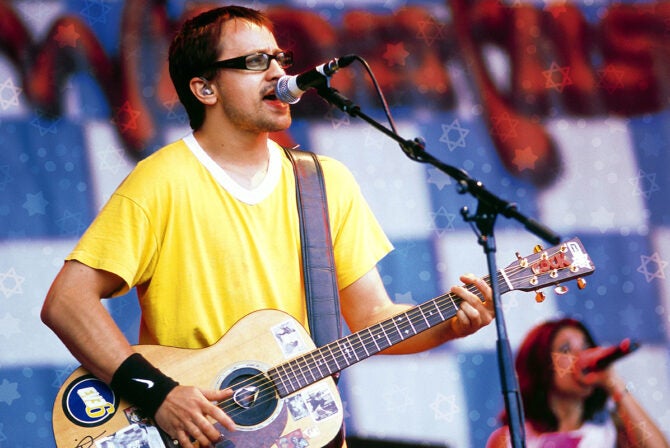“Princess Elsa couldn’t pray here.”
“What, sweetie?”
We are sitting in Chabad services for Rosh Hashanah. My 5-year-old daughter is perched on a chair next to me. Her brother made a beeline for the kids’ service the moment we stepped into the hotel hosting the services. I couldn’t blame him, and quite frankly, I’d have done the same since even I could see those services looked awesome. But my daughter wasn’t interested. She had her bag of books from home and her purple stuffed seahorse, and she was sticking by my side. She couldn’t even be swayed by her warm and friendly Hebrew school teachers or her big brother bearing marshmallows and temptations of fun games.
“No thank you,” she politely replied. And so there we were, the two of us in the women’s section contemplating princesses.
“Cinderella couldn’t pray here either, or Belle. None of the princesses could. They couldn’t even see anything. Neither can I.”
READ: I Stopped Going to Temple When I Had Kids–Can I Go Back Now?
She had a point. As far as mechitzas (the divider between the men’s and women’s section of the synagogue) go, this one was fairly tame; it was made up of several small cabinets pushed together with what I want to say were small potted trees on top—sounds odd, I know, but I’m pretty sure they were larger than potted plants. Either way, they were enough to distinctly mark the different sides of the room, yet leave enough space between so that you could sort of see across if you were so inclined. All in all, a fairly “progressive” mechitza, I’m told.
But my daughter was right. The “action” was on the men’s side; that’s where the table was where the Torah reading took place, and that’s where all the men focused all the public prayer. And although we could hear it perfectly well, no matter how I lifted her or how we stretched, we couldn’t see a thing. It didn’t matter to her that the lectern was on the women’s side—which I was certain was somewhat liberal for the movement. No. What was clear to my daughter was that this was not for princesses. Not a single one. Oy.
I signaled to my husband that it was time to go—it was one of those subtle through-the-trees kind of waves, as in not really subtle at all, but it’s Chabad and they know not everyone is used to a mechitza so they don’t give you dirty looks.
READ: What It Means to Be a Jewish Family in Rural Maine
“It’s time to go,” I said, more urgently than I probably meant to. “If we hurry we can grab a snack at home and just make it to the Reform shul for their family service.”
“Wait, we’re shul hopping?” my husband asked. “OK, OK, I’ll get the boy.”
And a few moments later we were on our way—racing back home to grab snacks, run to bathroom (which you know with little kids and fancy clothes, it takes even longer than it does with little kids and regular clothes, which takes even longer than it does with—well, you get the picture), and then back into the car to run to the Reform shul.
***
I didn’t grow up in a Reform shul, and this was my first time going to our local Reform place on Rosh Hashanah, so I wasn’t entirely sure what to expect myself. When we entered I whispered to the usher that I was looking for the family service, and we were shown the way to the main sanctuary. “No, no, just the family service,” I said. I was sure this couldn’t be right—the place was packed, and since my kids had already been to a different shul, I knew they couldn’t entirely be depended on for good behavior. I needed the kind of family service I expected to find from my years in the Conservative movement: off in some classroom nowhere near the serious goings on in the main sanctuary But, no. Apparently in this Reform shul, the families are front and center.
I had found the right place. We moved to the back.
We may have been late, but we got there at just the right moment. As we sat down the Torah processional began, and as if the whole thing had been scripted for my daughter, every single Torah was carried by a woman; even the cantor was a woman.
***
While my husband and I were both raised in the Conservative movement, our kids ended up in a Chabad Hebrew school both because my son’s best friend was attending and we wanted our kids to have the strongest possible foundation in Hebrew and prayer. But I have to admit, it was something beyond that for me as well. Having only been raised in one movement, I think I always had the sense that there were fences between us, denominationally. We may make jokes about it, but there was a sense that our choice was somehow valid, while Reform was too watered down and Orthodox was, well, don’t get too crazy.
READ: My Daughter Doesn’t Want to Be Jewish
And it is that—that sense of separation and distrust or disrespect—that I want more than anything not to pass down to my children. So we chose Chabad for their Hebrew school and their summer camp (and their high holiday services) and the Reform shul for Shabbat and preschool. And I’m sure we’re not done with the Conservative movement yet, either. I’m purposely exposing them to the various faces and voices and colors of Judaism in our little community.
***
“Look, sweetheart!” I picked my daughter up and brought her to the middle aisle. “Look who is holding the Torah! Every single person holding the Torah is a woman. And whose voice do you hear? Even the cantor singing is a woman! So, in this shul, could a princess pray?”
She had to admit it. If Cinderella was here she could lead services; she could even carry the Torah if she wanted. “Now listen to me,” I told her. “Every shul is different. No one is doing it right and no one is doing it wrong; they are just different. As you grow you will find the place that is right for you. You get to choose.”







